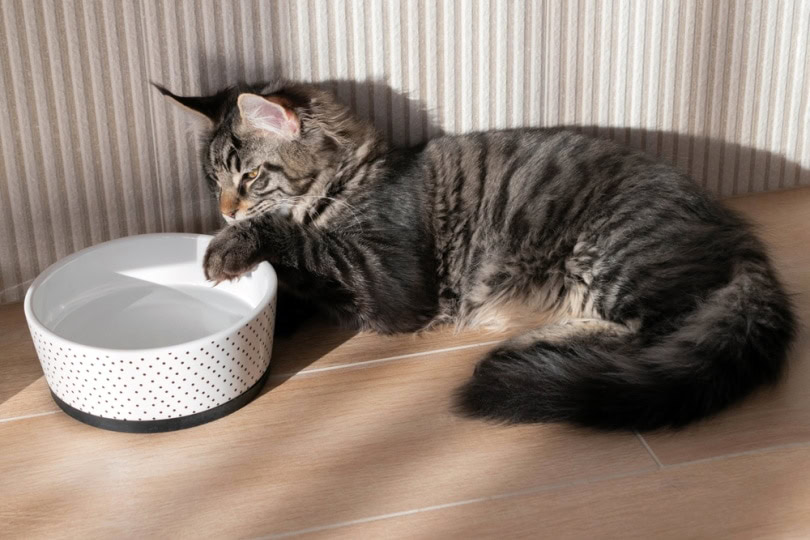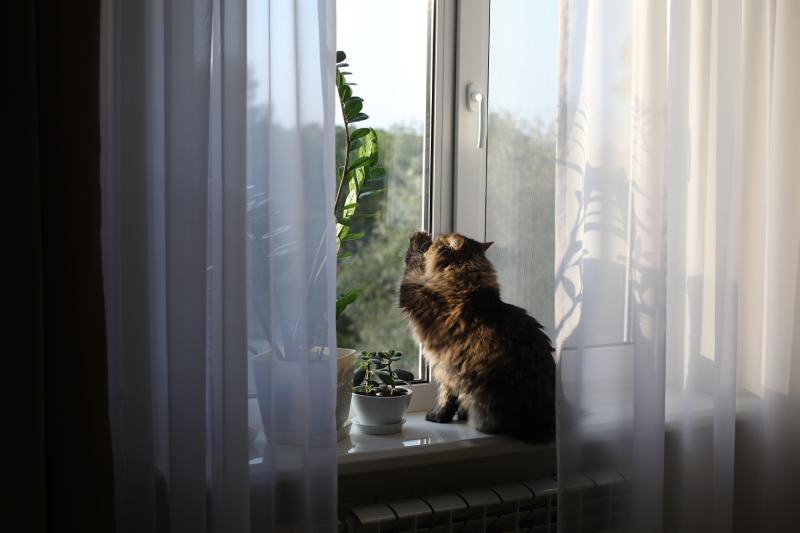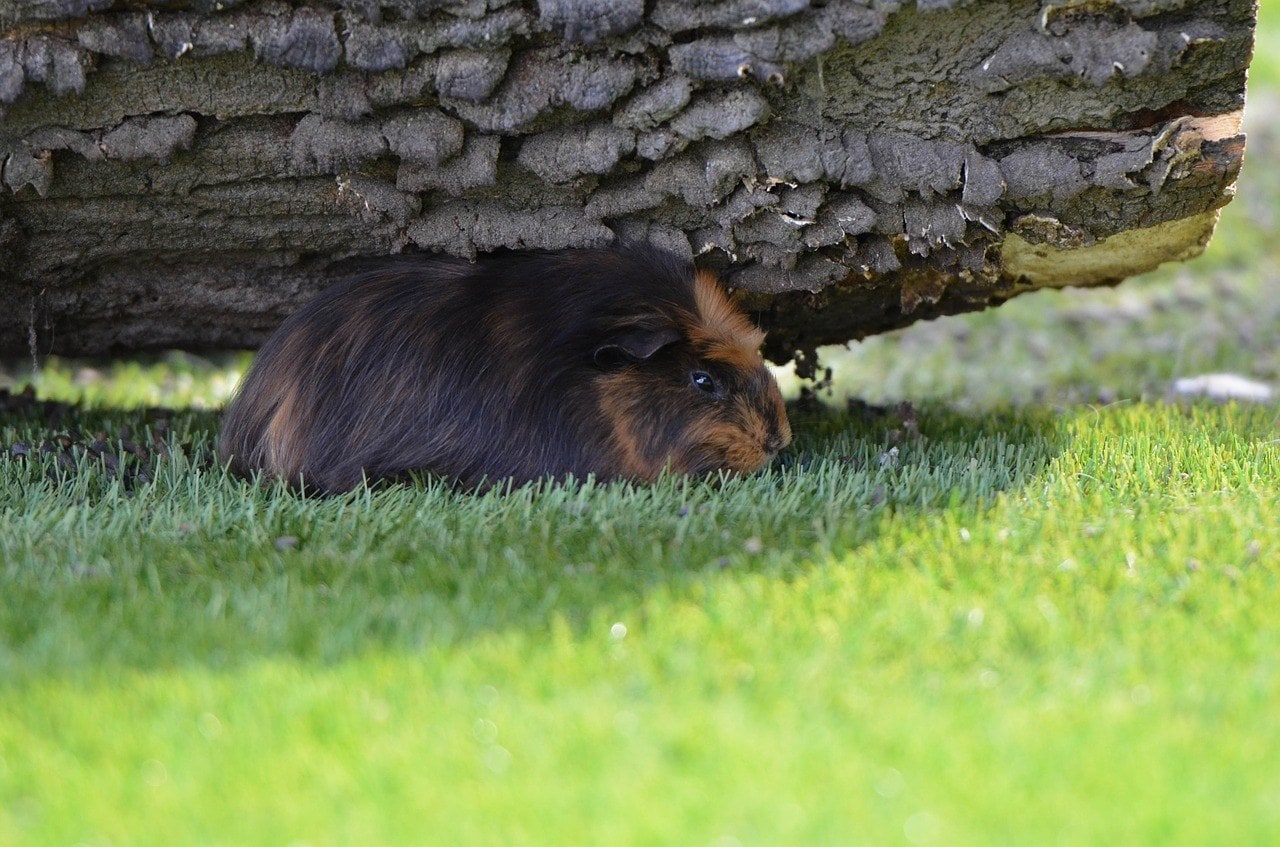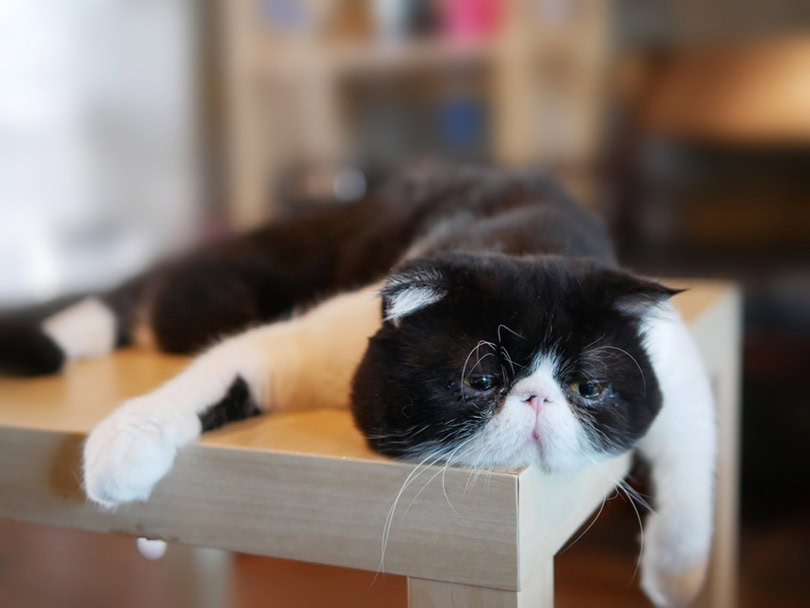VET APPROVED

The information is current and up-to-date in accordance with the latest veterinarian research.
Learn more »Click to Skip Ahead
If you’ve ever owned a cat, you may have noticed them fishing around in their water bowl. I’ve owned several cats over the years, and all of them have done this, so it isn’t an odd behavior in the least.
However, for the most part, why cats paw at their water bowls is still a bit of a mystery. There are several possible explanations for why some cats may do this, but figuring out the “which” of behaviors can be somewhat challenging.
Still, we have a few educated guesses. Here is a list of probable reasons why your cat may be deliberately wetting their paw in their water bowl.

The 7 Possible Reasons Why Cats Paw at Their Water Bowl
1. The Bowl is Too Deep or Narrow
Cats’ whiskers are extremely sensitive. If the water is too deep inside the cup or bowl, or the bowl is too narrow, they may not want to reach their head all the way down. It may make their whiskers uncomfortable, constantly touching the sides of the bowl. Although this phenomenon of whisker fatigue remains mainly anecdotal and requires further scientific confirmation, it could make some cats particularly stressed about what their whiskers touch.
Some cats may not drink out of deep bowls at all. Others may go through phases when they don’t want to reach their head deeply into bowls.
In an attempt to reach the water without upsetting their whiskers, cats may try to “scoop” up the water with their paw. Of course, this typically doesn’t work super well, but many cats find it preferable to rubbing their whiskers inside the bowl.
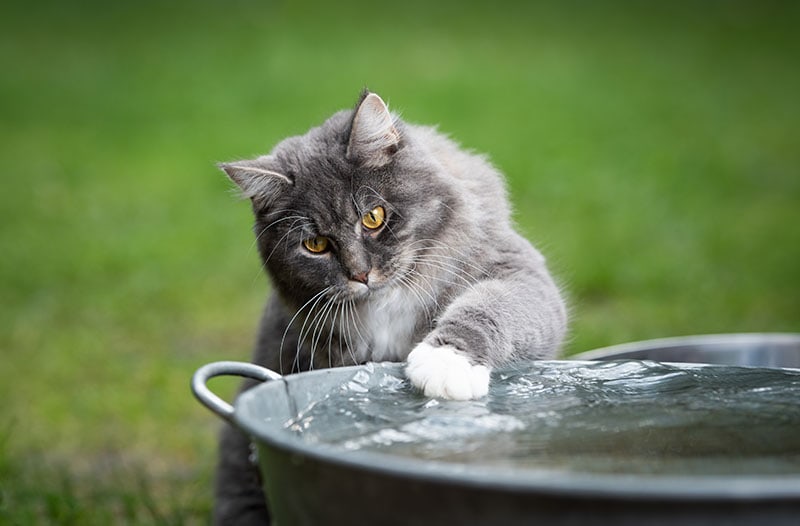
2. The Cat is Stressed
Anxious, stressed cats may paw at their water bowl, or show other signs of stress or uncertainty, such as having a reduced appetite, hiding, urinating or defecating outside of their litter box, and grooming excessively, among others. This may be especially the case if there have been any significant changes around the household, arrival of new pets or a baby. Ensure the water bowl is not placed in a stressful location and try to identify the cause for your cat’s stress.
Some of these signs can also indicate an underlying health condition, so it’s important to consult with your veterinarian if your cat is showing changes in their behavior, or appears stressed or unwell.
3. Moving Water is Preferred
Instinctually, many cats prefer moving water. In the wild, moving water is typically cleaner than still water, so it makes sense why cats would prefer it. However, cats may not have access to flowing water inside our homes.
Still, cats don’t particularly care why the water is moving. Therefore, they may make the water move by stirring it with their paw, which makes it “move”.
If you think your cat is making their water move for this reason, consider investing in a fountain or something similar that makes the water flow.
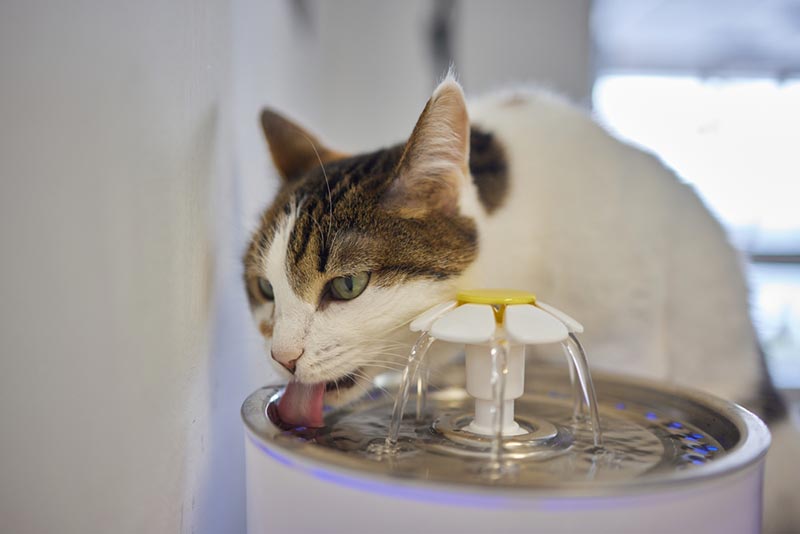
4. The Cat is “Gauging” the Water Depth
Occasionally, cats may have a hard time gauging water levels. They may not know if there even is water in the bowl. Therefore, they may dip their paw in to see where it is at. Cats have great vision, but the color or shape of the bowl can still make it hard for them to tell exactly where the water line is.
If your cat only does this in low-light conditions or with a particular bowl, this may be the reason. Luckily, there isn’t anything particularly wrong with this behavior. It’s just one way your cat is adapting to their environment.
5. They’re Marking Territory
Cats like to rub against objects and people, marking them as their own, and making them smell familiar and reassuring. They also use their paw pads to mark territory, particularly if they feel threatened by the presence of a new pet. If you have a new cat or dog, your kitty may be pawing next to the water bowl in order to leave their scent. Ensure each of your pets have their own set of food and water bowls.

6. Your Cat is Being a Cat!
Cats are very curious and playful. To be honest, cats will do things that are strange seemingly just because they can! They may simply want to see what happens when they stir the water. Or, they may just be very bored. They’re just “catting,” in other words.
If your cat does this often, it may be a sign that they like to play with water. Sometimes, it may simply be impossible to know why your cat is doing something. They may just do it!
7. There May Be a Medical Problem
Finally, there are also some potential health issues that may cause cats to behave differently, or to spend more time next to their water bowl, leading to them trying to paw at it. These may be issues causing increased drinking such as kidney disease or diabetes, or your cat may be unwell for another reason. If this is combined with changes in their drinking or appetite, lethargy, or hiding, it’s important to get your cat checked over by the vet as soon as possible.

Frequently Asked Questions
How much water does my cat need to drink per day?
The amount of water your cat needs to drink per day depends on several factors, such as their size, age, diet, activity level, and health. A general rule of thumb is that cats need about 4 ounces of water per five pounds of body weight per day.
However, this may vary depending on the individual cat and their environment. You can check if your cat is well-hydrated by gently pinching the skin on the back of their neck. If the skin snaps back quickly, your cat is hydrated. If the skin stays up or goes down slowly, your cat may be dehydrated and will need to see the vet.
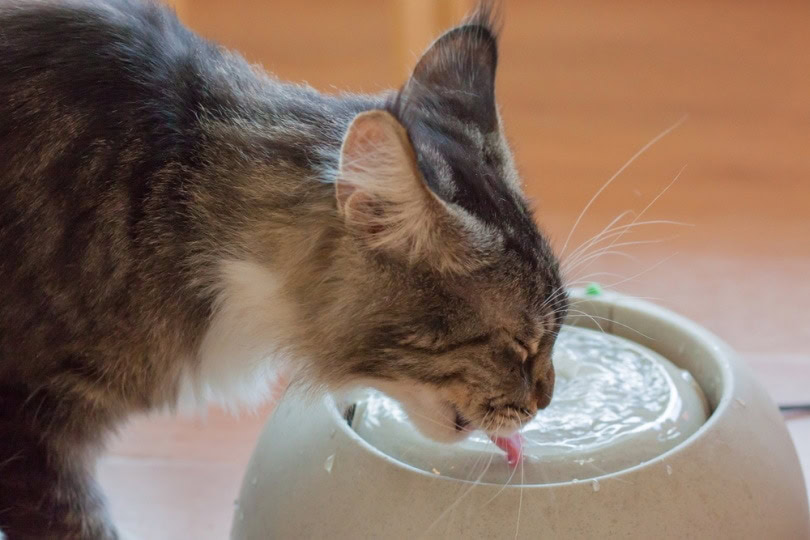
What are the signs of dehydration in cats?
Dehydration is a fairly serious health issue that requires urgent medical attention. It cannot be corrected by giving your cat water, and is usually caused by an underlying condition that needs treatment. Here are some signs that your cat is dehydrated:
- Weakness
- Loss of appetite
- Dry mouth or nose
- Sunken eyes
- Decreased urine output or dark-colored urine
- Constipation or hard stools
- Increased heart rate or breathing rate
- Reduced skin tent
How do I encourage my cat to drink more water?
While it may seem strange, cats are very bad drinkers. In the wild, they would get much of their moisture needs from their prey, so they just aren’t designed with the same thirst needs that we have. Therefore, you may need to encourage your cat to drink water, especially if they cannot eat wet food for one reason or another.
Here are some ways to encourage your cat to drink:
- Provide several water bowls around the house
- Offer wet food or treats
- Offer wet food or treats
- Place the water bowl by itself, away from the food bowl and litter box
- Have several different types of water bowls and fountains

Conclusion
Cats may dip their paw into their water for a range of reasons. Honestly, we don’t always know why a particular cat may dip their paw into their water. Sometimes, it may be because they want it “moving” or because they need help gauging where the water is. Other times, they may do it just because they want to!
Luckily, this behavior is very rarely troublesome or an indication of an underlying health problem, but if there is any doubt, do consult your vet.
Also see:
- Why Does My Cat Move Their Water Bowl? Common Reasons
- Why Does My Cat Cross Their Front Paws? Typical Reasons
Featured Image Credit: Pickless, Shutterstock
